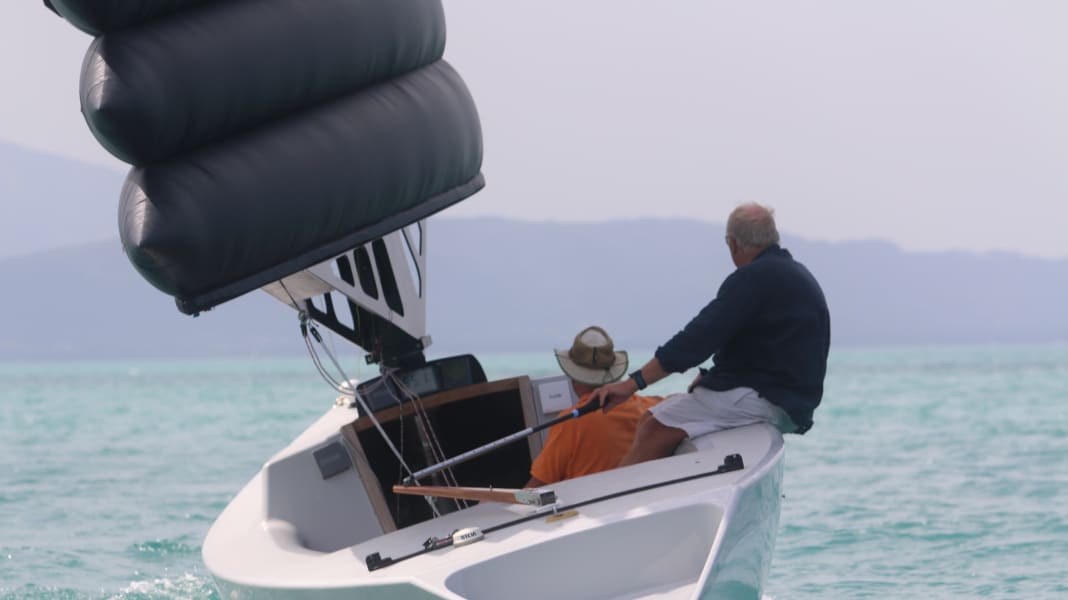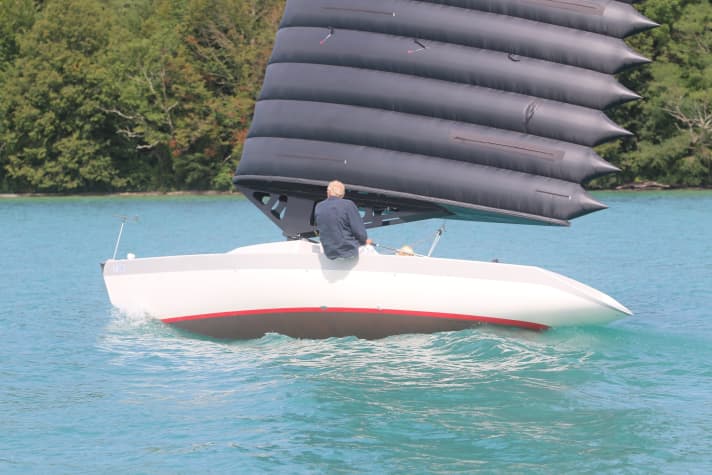

At the push of a button, the air chambers of the Inflated Wing Sails, IWS for short, fill up and the rig grows 13 metres high out of the "nest" of the 360-degree rotating wing mast as if by magic.
Once all five air chambers of this "aero rig" are filled, 42 square metres of symmetrical NACA sail profile provide propulsion for the IWS prototype yacht, a format from the international 5.5 metre class. "If you need less sail area, just inflate three or four air chambers," says Swiss entrepreneur and sailmaker Edouard Kessi, who initiated the development of the innovative system together with paragliding pioneer Laurent de Kalbermatten. Reefing has never been easier! The two inventors are supported by aerodynamics professional Stéphane Fauvet, who worked for many years as a sail developer at North and Incidence Sails. "Our concept is based on the way paragliders work, where air chambers form a fixed profile and thus provide lift. The difference with the IWS is that our profile is shaped identically on both sides and is inflated vertically," explains engineer Fauvet. The IWS is filled with air at the push of a button and via fans located on the leading edge of the profile. The pressure in the sail must be permanently at 1.5 grams per square centimetre (0.0015 bar) so that the profile membrane is stable over the entire height and an inflow can be created that provides propulsion. The trimmer controls the twist of the sail via the air pressure in the profile; the system absorbs pitching movements impressively. According to the developers, the symmetrical NACA profile design of the wing also has the advantage that the sail pressure point lies directly in the aerodynamic centre of the pro, which means that the free-standing wing, which can be rotated through 360 degrees, does not need to be actively trimmed. The angle of attack of the wing to the wind can be changed using a mainsheet. Otherwise, the IWS does not require any winches, halyards or complex deck equipment. No flapping sail laminate, no dynamic loads. This makes the innovative concept seem tailor-made for use on sailing superyachts, which have always favoured rigging solutions that are as automated and safe as possible.






